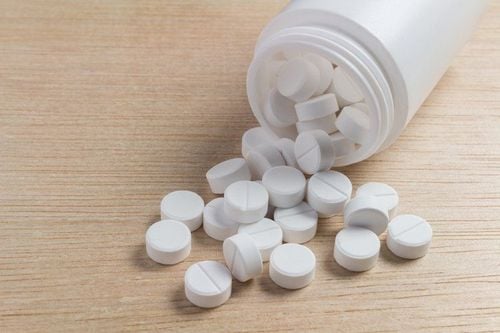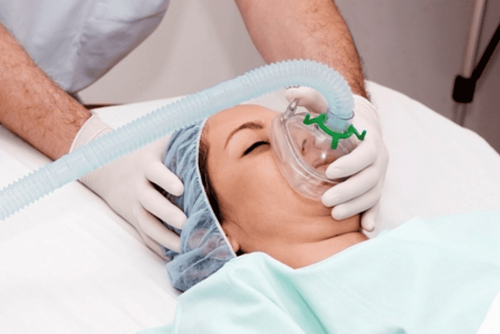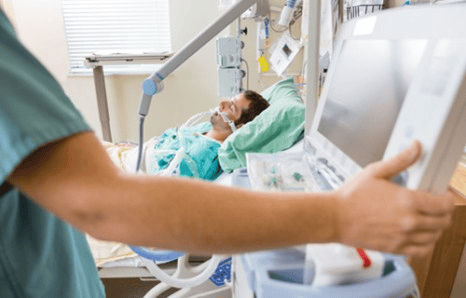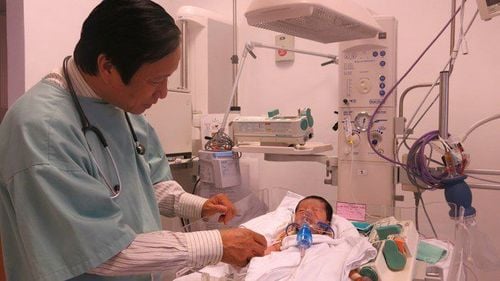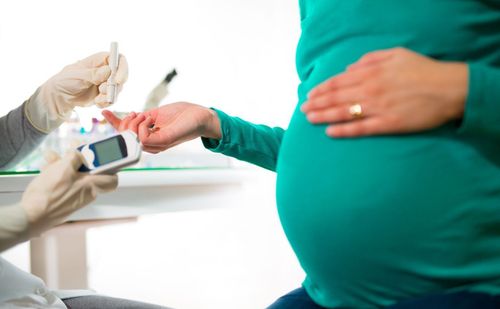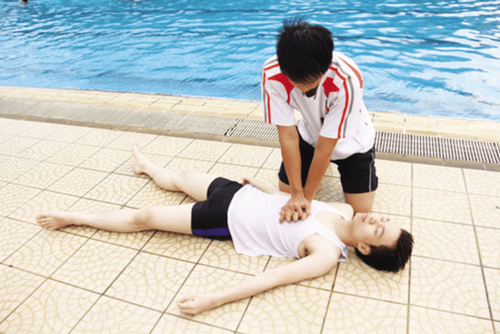This is an automatically translated article.
The article was written by Specialist Doctor II Le Thanh Cam - Pediatrician, Department of Pediatrics - Neonatology - Vinmec Danang International General HospitalDrowning is a form of asphyxiation, caused by water being inhaled into the lungs, or airway obstruction due to laryngospasm when the victim is in the water. This is a common accident, occurring while swimming, sailing and during water activities. However, it can also happen at home such as in a water tank, jar, jar, gutter,...
When suffocated, the victim stops breathing, the heart beat slows down due to reflexes. The state of apnea continues to lead to lack of oxygen in the blood, causing an increase in heart rate and blood pressure. If apnea continues for between 20 seconds and 2-5 minutes (depending on the victim), the threshold is reached and breathing occurs again causing water to be inhaled causing immediate laryngospasm, appearing the second apnea, followed by forced breathing, causing water and foreign objects to be inhaled into the lungs. The consequences are slowed heart rate, arrhythmias, cardiac arrest, and death.
1. First aid for drowning Local first aid and proper technique are the most important, deciding the victim's survival or brain sequelae. To save the life of a victim of asphyxiation, it is necessary to promptly stop the above processes, preferably right from the first breathlessness, i.e. within the first 1 - 4 minutes of being submerged in water, and at the same time handle it well. accompanying trauma (especially head and neck trauma and spinal cord injury).
The correct way to give first aid is as follows:
Quickly get the victim out of the water by putting his arm, a long pole for the victim to grasp, throw a lifebuoy or lift the casualty Place the victim in a dry, ventilated place If If the victim is unconscious, check if the victim is breathing or not by observing the movement of the chest: + If the chest does not move, the victim is not breathing, perform chest compressions on the lower half sternum. Combine chest compressions and rescue breaths in the ratio of 15/2 (2 rescuers) or 30/2 (1 ambulance) for 2 minutes and then re-evaluate whether the victim can breathe again? Are the lips pink? Is there a pain-triggering response to washing? Otherwise, these emergency actions must be continued even on the way to the hospital. + If victim is still breathing on their own, place the victim in a safe position, lying on one side to allow the vomit to escape if the victim vomits Remove wet clothing and keep warm by covering the victim with a blanket. a blanket or a dry towel Promptly seek medical attention even if the casualty appears to be normal or has fully recovered from first aid because of the risk of secondary difficulty breathing which can occur several hours after asphyxiation country
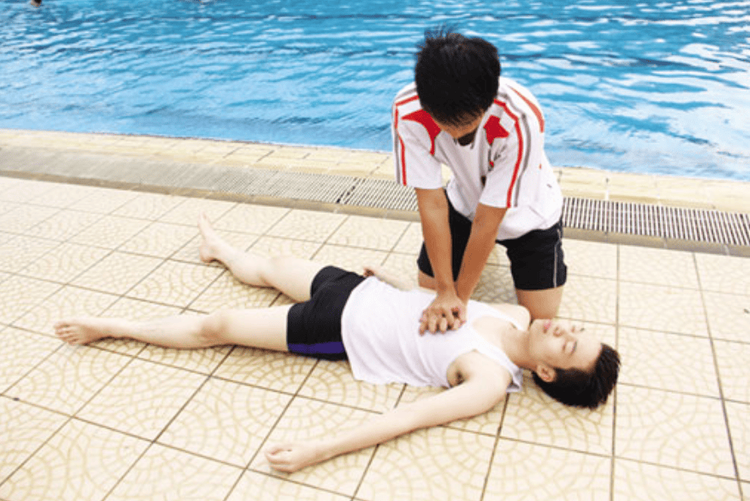
2. What to avoid when drowning Most victims of drowning when taken to the emergency room at the hospital do not receive first aid or give first aid improperly leading to death or brain sequelae due to lack of oxygen . Improper first aid methods include: + Spending a lot of time splashing water: the reverse movement of the victim is not necessary and should not be performed because usually the amount of water entering the lungs is very little, not the lungs are filled with water like people common people think. This very small amount of water will be expelled when the victim breathes on his own. In addition, flushing also slows down the time of first aid rescue and increases the risk of aspiration. + Roll the roller: let the child lie on his stomach on the jar to let the burning straw inside roll the roller back and forth for the purpose of "drawing water" in the child's body. This method is not effective and causes burns to children. + The victims of cardiac arrest should not give first aid breaths and chest compressions at the accident site or while transporting the victim to a medical facility. This makes the brain and organs lack oxygen for a long time, brain cell death leading to death and severe brain sequelae. Therefore, it is best to give first aid as soon as the victim's head is out of the water before bringing him to shore.
3. The following factors increase the risk of suffocation Not knowing how to swim or overestimating one's swimming ability. Risky behaviors such as bathing in rivers, playing on the banks of ponds and lakes, etc. Lack of adult supervision. Hypothermia leads to rapid exhaustion, not being able to swim. No primary arrhythmia was detected. For example, immersion in cold water can cause death in patients with congenital long QT syndrome type 1. In older children, it can be caused by alcohol consumption, drug use... Trauma, stroke cerebral infarction, myocardial infarction. Hyperventilation before diving reduces PaCO2, while PaO2 decreases to 30-40 mmHg due to consumption. Because PaCO2 is reduced, respiration cannot be stimulated. This causes brain hypoxia, convulsions, loss of consciousness leading to drowning.
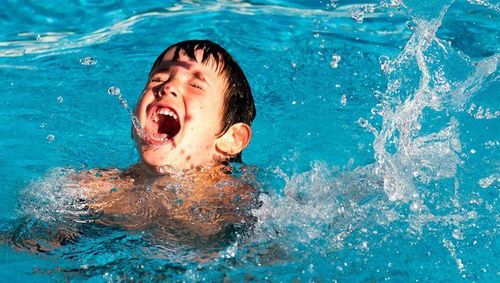
4. Poor prognosis of the disease Duration of immersion > 5 minutes Glasgow on admission < 5 points Dilated pupils, loss of light reflex Cardiac arrest, respiratory arrest on admission Blood pH on admission < 7
5. Management 5.1 First aid on the spot Main objective: CPR. Quickly bring the patient out of the water Remove foreign body (if any) and perform CPR immediately. Perform chest compressions as soon as possible if cardiac arrest If cervical spine injury: need to be immobilized and cautious when moving
Quickly transport the patient to the hospital:
+ Continue to maintain cardiac resuscitation Lungs (if needed)
+ Give oxygen if the patient can breathe on his own
5.2 At the hospital Assess the first aid effectiveness
Treat respiratory failure and associated injuries:
Ensure ventilation and Oxygen Breathing machine + PEEP or CPAP breathing if the patient can breathe on their own (effect of reducing shunt in the lungs and reducing pulmonary edema).
Target: PaO2 > 80 mmHg, PaCO2 = 30-35 mmHg
*Note: PEEP must be reduced slowly when you want to quit PEEP, because abrupt PEEP cutting can easily cause recurrent pulmonary edema.
Mild cases:
Bed rest for 24 - 48 hours (preventing late pulmonary edema due to heart failure)
Oxygen, monitoring SpO2 and blood gases
Bronchodilators if there is bronchospasm
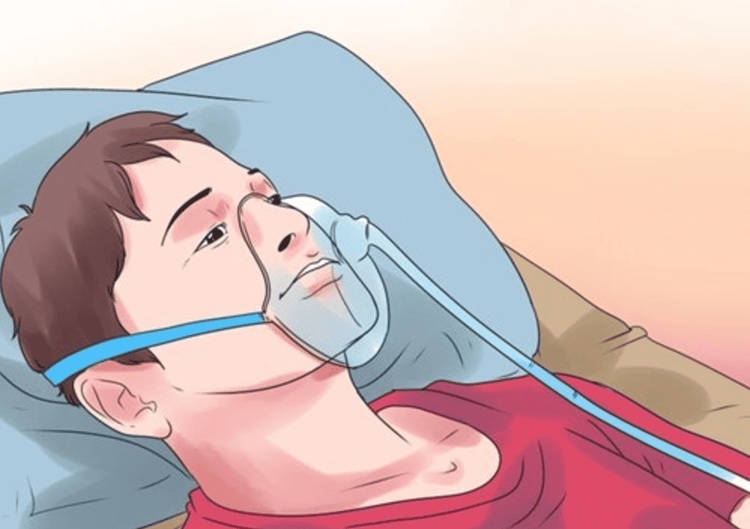
Ensure hemodynamics Should limit fluid to about 1-1.5 liters/24 h
If there is a collapse:
+ Insert IV catheter
+ Fluid replacement based on venous pressure
+ If blood pressure remains low: dobutamine + dopamine and can be combined with other vasoconstrictor drugs (adrenalin, noradrenalin)
Lasix should not be given when there is hypovolemia and hemoconcentration.
Prevention of cerebral edema and convulsions : Lie with head elevated 30o Give hyperventilation Avoid fluid infusion and may use lasix Mannitol 20% 1 g/kg IV over 15 minutes / every 6 hours Use Phenobarbital intramuscularly or Thiopental IV (should not be used for more than 48 hours) Benzodizepam and phenytoin can also be used to control seizures Other movements and measures Gastric tube placement, gastric aspiration Reheat if hypothermia occurs, raise temperature above 34° C If fever is high: paracetamol + cold compress on head and neck Record ECG, chest X-ray, blood gas test, blood chemistry, CPK, hemoglobinuria Bicarbonate if severe metabolic acidosis Pay attention to adjust blood sugar Low molecular weight Heparin blood prevention Antibiotic block if there is aspiration pneumonia Corticosteroid : not recommended
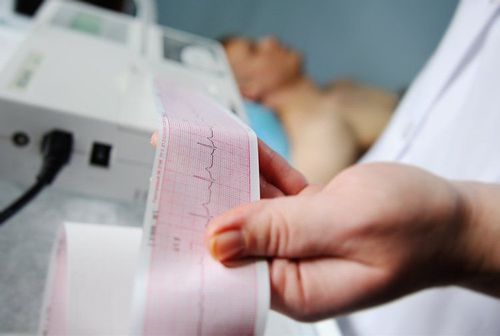
6. Drowning Prevention The issue of drowning prevention is very important. According to statistics at Children's Hospital 1, cases of suffocation due to falling into ponds or rivers near the house, indoor water containers such as water jars, buckets, etc. account for about 20% and the majority in children. < 5 years old. Therefore, it is necessary to educate and guide parents on how to properly preserve water containers in the house. In addition, children should be prohibited from bathing in rivers, ponds, lakes, seas, ... or places where there is no manager to look after them. Furthermore, it is necessary to strictly manage children bathing in swimming pools, lifeguards should work actively and must be taught first aid for asphyxiation for both adults and children.
At school, it is necessary to have a plan to educate and train students to practice swimming:
Do not leave young children alone at home, cover all water containers in the house Do not let children play alone near ponds, lakes, canals, canals, rivers: always accompanied by an adult Do not allow epilepsy patients to swim Should teach swimming lessons, teach children to swim The school pays attention to remind students at the end of the summer vacation about swimming, or rowing River areas are very dangerous and unsafe, requiring supervision. Mobile rescue team: the organization of mobile first aid teams and groups is very necessary in the current situation of our country when the educational level is not high, people still make too many mistakes in first aid for asphyxiation. to unfortunate consequences for children and families
Please dial HOTLINE for more information or register for an appointment HERE. Download MyVinmec app to make appointments faster and to manage your bookings easily.





